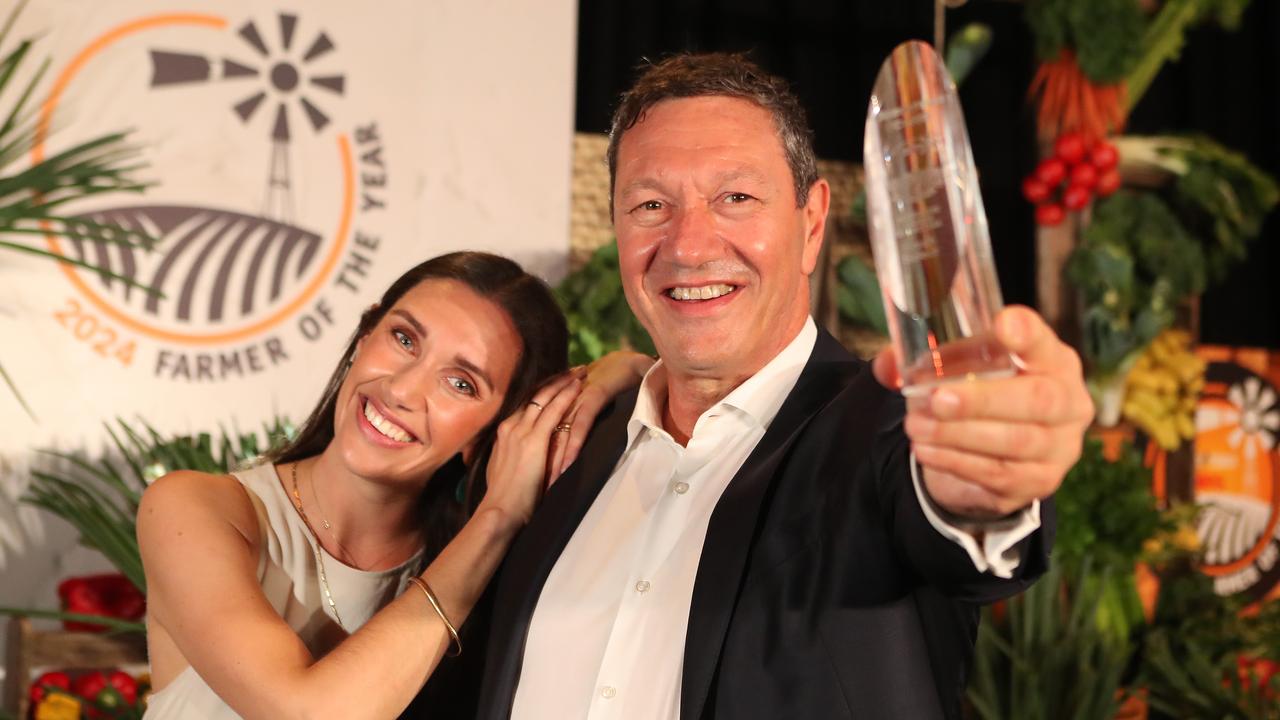Dinicola family explains switch to almonds from mixed farming
A SWITCH to almonds means the Dinicola family can now see the forest through the trees, writes ALEX SAMPSON.

THE Dinicolas don’t have any regrets about shaking up their mixed farming business and taking a gamble on almonds.
The family, from Lake Wyangan, near Griffith, believe replacing their rice fields, vegetable and broadacre crops and sheep with the popular nut was the best thing they ever did.
DINICOLA FAMILY
LAKE WYANGAN, NSW
GROWS 485ha of almonds across several blocks
PRODUCES about 700 tonnes a year
PLANS to develop an organic almond orchard
SEES a bright future for the nut
Armando Dinicola bought land at Griffith in 1978. He joined a big Italian community of growers producing everything from fruit to wheat.
The farm was passed to son, Denis, who continued with the mixed enterprise until it became apparent that his own children wanted a slice of the farming life.
Denis then began looking at lucrative options to help the farm grow, and settled on nuts.
“With the health-trend boom, nuts became the pick of the horti crops,” Denis said.
“Of all the nuts, almonds offered the fastest return on investment.
“They also had considerable health benefits and could handle a range of climatic conditions.”
To begin with, the Dinicolas planted a 30ha trial plot to confirm if almonds were the right choice.
In 2002 Denis’ faith in the industry was such that he joined the AlmondCo growers’ co-operative, which processes the region’s nuts.
He began planting trees in 2004 and, to support the expansion, sold two of his three rice farms.
“We kept the rice farms while we were developing to help with investment and pay the bills,” he said.
Now the family has 485ha of almond trees and trades as Mandole Almond Orchard.
With almost 75 per cent of Australia’s almond properties 100ha or less, Mandole is considered a heavy hitter.
Of its 485ha, 243ha are in full production, with 246ha planted on a recently purchased neighbouring property and due to come into full production by 2022.
BEAR FRUIT
THE new property was purchased in January last year with planting only finished last month.
The Dinicolas opted for self-pollinating varieties to reduce risk and their reliance on beekeeping services, for which demand is expected to double in the Riverina over the next 10 years.
Almond trees begin producing fruit after three years and enter full production within eight to 10 years.
Mandole’s production currently sits at 700 tonnes a year, depending on the season. The new 88,000-tree almond planting is expected to double this by 2022.
While Denis admitted the process of expansion hadn’t been easy for a family operation, especially when competing with larger corporate investment companies, he said he couldn’t be happier with how things had turned out.
“Planting almonds worked out very well, better than we expected,” Denis said.
“We had budgeted on lower returns than we ended up getting, so the higher returns made the whole transition easier.”
These days Denis’s 29-year-old son, Dean, is in charge of the business, and expansion is running full steam ahead.
NATURAL PROGRESSION
DEAN and Denis have plans to turn the family’s one remaining rice farm, a 162ha block at Griffith, into a certified organic almond orchard over the next five years.
“Organic production is a lot harder and requires different practices and challenges,” Dean said.
“We started looking at organics over the past 12 months because we can see a popular demand.
“It will be another challenge but as farmers it’s these challenges that interest us.”
Aiding the expansion is AlmondCo’s new almond hulling and shelling facility at Griffith, meaning the Dinicolas will no longer need to transport their nuts to Renmark in South Australia for processing.
“It will be a pretty big saving on transport,” Denis said.
“Next season the whole crop will go there.” To improve harvest, the Dinicolas have added on-farm storage so they can keep harvesting and don’t have to transport the nuts to the processor immediately.
The Riverina produces 15 per cent of Australia’s almonds and is growing steadily. The area accounts for 5427ha of the 35,886ha national crop — the second-biggest almond planting in the world, behind the US. Almonds are Australia’s biggest nut crop, accounting for 61.9 per cent of the nut industry — streets ahead of the next most popular, macadamias, at 26.3 per cent.
Denis said almonds, originally a desert crop, have adapted well to the irrigation growing area of the Riverina.
“The red sandy loam soils are ideal and all our irrigation systems have been implemented with state-of-the-art technology to ensure efficient and accurate watering of our trees,” Denis said.
TASTE FOR IT
FARMING within the Murrumbidgee Irrigation Area, the Dinicolas have enough water to grow a thirsty crop such as almonds.
“They do require water year-round but we have worked hard to reduce their consumption,” Denis said.
“Advances in technology have allowed us to be able to provide the precise amount of water to the trees via drip irrigation without any wastage, with the help of soil-moisture monitoring.”
And the hard work is paying off, with production sitting at three to four tonnes a hectare from 10-12 megalitres of water, a respectable yield that returns an average of $7/kg or $7000 a tonne. Both Dean and Denis completed a course with the Almond Board of Australia when they first started out, but apart from that, have learned the ropes of almond growing along the way.
“It was a bit daunting in the beginning but we learned from our mistakes very quickly,” Denis said.
“Not too much went wrong really, and we made minor tweaks here and there.”
Their success is quite an achievement, given their first few years of true production were during the worst drought years of 2007 to 2010, proving good farmers can rise above adversity. “There wasn’t enough water to get enough irrigation,” Denis said. “But we got through it. There’s a very supportive community of family-owned almond growers in the Riverina and we all seem to be expanding.”
Denis’s wife, Annette, daughter Jenna and her husband, Tom, are all involved in the business, with Jenna and Tom working on a value-adding proposition for the business.
The idea is in early development and won’t be revealed until next year.
“I got the whole family into almonds.” Denis said. “They just keep finding new ways of using almonds so the opportunities are great.”
In addition to the family, there are three full-time staff on the farm, with six casuals added at harvest in January and February.
Harvest runs for about six weeks and usually finishes by mid-March.
In a sign the family’s hard work is paying off, Dean was named the 2011 Young Almond Farmer of the Year by the Almond Board of Australia, an award that came with a $10,000 grant to do a study tour on any aspect of production he chose. He decided to go to the almond mecca of California — the world’s biggest almond producer.
“We would love to be the almond specialists,” Dean said. “It’s the right nut for this area, it grows well and the climate is right. It’s a great industry to be involved in and we’re really excited about the future.”


